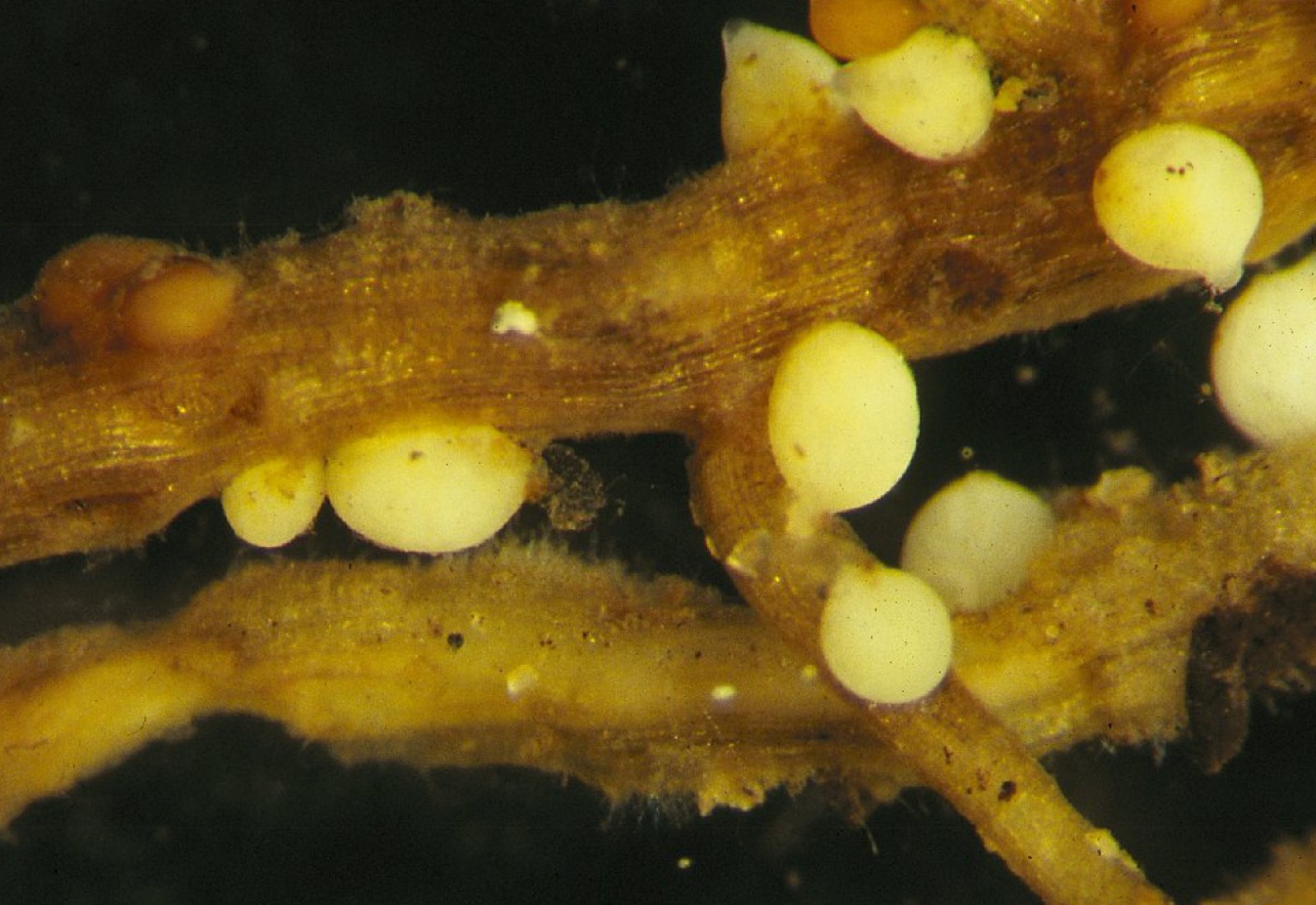Staying on Top of Your Soybean Diseases

By Ron Friesen
A warm dry early spring appears to have kept soybean seed and seedling diseases in Manitoba to a minimum this year.
A few cases have been reported but nothing widespread or severe, says Holly Derksen, a Manitoba Agriculture plant pathologist.
“Most seed went into warm soil and there wasn’t a lot of moisture, so there weren’t any seedling issues,” Derksen says.
She says Manitoba Agriculture has received the occasional report of pythium and phytophthora but not at a level where yield loss is expected. Most cases are in the Red River Valley where a few areas experienced standing water on flat, heavy clay soils – conditions conducive to root diseases.
Seed and seedling diseases are common in soybeans when the ground is very wet in the first few weeks after planting and when soils are heavy and poorly drained. Fortunately, most areas of Manitoba escaped such conditions during and immediately after seeding this spring.
Growers are also fortunate that soybeans are a relatively new crop in Manitoba, so growers don’t have to deal with the disease issues common in growing areas of the United States.
“The diseases that we have, for the most part, aren’t the ones that cause big losses, even in areas that have been growing soybeans for a long time,” says Derksen.
Something which did affect Manitoba soybean fields this spring looks like a disease but isn’t. Iron deficiency chlorosis (IDC) is a plant disorder in which high levels of calcium carbonate and soluble salts prevent roots from absorbing iron in the soil. The main symptom of iron deficiency is inter-veinal chlorosis, where leaves turn yellow and their veins remain green. Soybean varieties susceptible or only semi-tolerant to IDC show the most yellowing. Yield loss can occur if conditions last beyond the fifth to sixth trifoliate leaf stage.
The best defense against IDC is either to choose tolerant varieties or to select fields low in carbonates and soluble salts, says Dennis Lange, a Manitoba Agriculture pulse crop specialist, who reports getting a lot of calls from growers about yellow soybeans this year.
“At the end of the day, there’s really nothing you can do for it once you see it in the field. You need to look forward to next year and select a variety that’s more tolerant,” Lange says.
“The biggest key is, when you’re planting varieties that are susceptible, put them in fields that have lower carbonates and lower soluble salts.”
The greatest concern among Manitoba growers is about a disease which isn’t even here yet. Soybean cyst nematode (SCN), a parasitic roundworm, is a major problem in soybean-growing regions of the U.S., where it reduces producer returns by hundreds of millions of dollars each year.
Manitoba has so far been spared this soil-borne pest, but it’s just a matter of time before it does arrive, says Mario Tenuta, a University of Manitoba soil scientist.
“We are in line to get it. It’s right at the border in North Dakota and Minnesota as well, and moving northward,” Tenuta says.
The U of M conducts annual soil surveys to examine soybean fields for signs of SCN. In the meantime, Tenuta urges growers to practice on-farm biosecurity, keep their equipment clean and not allow soil from the U.S. into Manitoba on vehicle tires.
Although Manitoba is not a hotbed for soybean diseases just yet, growers need to scout their fields and be on a constant lookout for signs of them, says Cassandra Tkachuk, a Manitoba Pulse and Soybean Growers production specialist.
“The diseases are out there,” says Tkachuk. “Part of the problem with diseases is that, the more you produce a certain crop, the more inoculum builds up in the soil. Soybeans are a particular concern because we’re seeing a lot more acres, more frequent production and a lot of producers growing beans on beans. That’s really risky because of pest pressure, not just diseases.”
MPSG has resources highlighting potential disease and insect pests in soybeans. They are available at:
http://www.manitobapulse.ca/soybean-seed-treatments-assessing-risks/
http://www.manitobapulse.ca/soybean-insect-and-disease-identification-guide/


